Filter by

Mapping natural product diversity through genomics
- Edition
- -
- ISBN/ISSN
- 9789463957564
- Collation
- 204 p. : ill. ; 24 cm.
- Series Title
- -
- Call Number
- 572.86 Kau m
- Edition
- -
- ISBN/ISSN
- 9789463957564
- Collation
- 204 p. : ill. ; 24 cm.
- Series Title
- -
- Call Number
- 572.86 Kau m

Lactic acid bacteria in food biotechnology : innovations and functional aspects
- Edition
- -
- ISBN/ISSN
- 9780323898751
- Collation
- xi, 370 p. : ill. : ind. ; 24 cm.
- Series Title
- -
- Call Number
- 579.135 Lac
- Edition
- -
- ISBN/ISSN
- 9780323898751
- Collation
- xi, 370 p. : ill. : ind. ; 24 cm.
- Series Title
- -
- Call Number
- 579.135 Lac

Epigenomics
Epigenetic modifications act on DNA and its packaging proteins, the histones, to regulate genome function. Manifest as the heritable methylation of DNA and as post-translational histone modifications, these molecular flags influence the architecture and integrity of the chromosome, the accessibility of DNA to gene regulatory components and the ability of chromatin to interact within nuclear com…
- Edition
- -
- ISBN/ISSN
- 9781402091865
- Collation
- xiv, 438 p. : ill. : ind. ; 24 cm.
- Series Title
- -
- Call Number
- 572.87 Epi
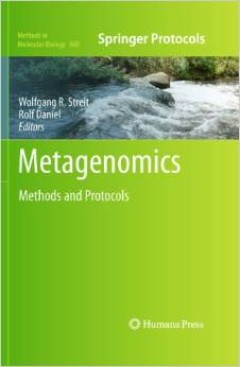
Metagenomics : methods and protocols
Metagenomics has proven to be a powerful tool for exploring the ecology, metabolic profiling, and comparison of complex microbial communities as well as its important applications in the mining of metagenomes for genes encoding novel biocatalysts and drug molecules for bioindustries. In Metagenomics: Methods and Protocols, expert researches provide an overview and introduction to basic methods …
- Edition
- -
- ISBN/ISSN
- 9781607618225
- Collation
- xi, 341 p. : ill. : ind. ; 27 cm.
- Series Title
- -
- Call Number
- 572.8629 Met
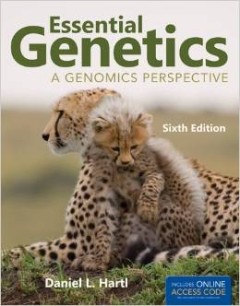
Essential genetics : a genomics perspective
Essential Genetics: A Genomics Perspective, Sixth Edition, provides an accessible, student-friendly introduction to modern genetics. Designed for the shorter, less comprehensive course, the Sixth Edition presents carefully chosen topics that provide a solid foundation to the basic understanding of gene mutation, expression, and regulation. It goes on to discuss the development and progression o…
- Edition
- 6th
- ISBN/ISSN
- 9781449686888
- Collation
- xxv, 572 p. : ill. : ind. ; 28 cm.
- Series Title
- -
- Call Number
- 572.86 Har e
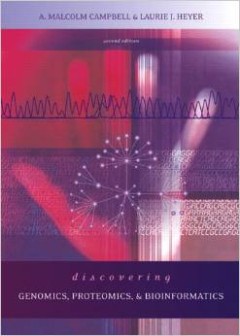
Discovering genomics, proteomics, and bioinformatics
Discovering Genomics is the first genomics text that combines web activities and case studies with a problem-solving approach to teach upper-level undergraduates and first-year graduate students the fundamentals of genomic analysis. More of a workbook than a traditional text, Discovering Genomics, Second Edition allows students to work with real genomic data in solving problems and provides the…
- Edition
- 2nd
- ISBN/ISSN
- 9780805382198
- Collation
- xv, 447 p. : ill. : ind. ; 28 cm.
- Series Title
- -
- Call Number
- 572.86 Cam d

Introduction to protein science : architecture, function, and genomics
Introduction to Protein Science, Second Edition, relates the study of proteins to the context of modern high-throughput data streams of genomics and proteomics. It also provides a balanced treatment of the relationship between computational and experimental methods. The text is enhanced by marginal notes, exercises, problems, and "weblems" that develop students' database and computational serve…
- Edition
- 2nd
- ISBN/ISSN
- 9780199541300
- Collation
- xix, 455 p. : ill. : ind. ; 28 cm.
- Series Title
- -
- Call Number
- 572.6 Les i
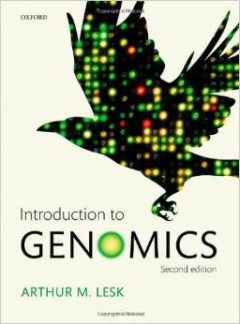
Introduction to genomics
Our genome is the blueprint to our existence: it encodes all the information we need to develop from a single cell into a hugely complicated functional organism. But how do we identify the genes that make up our genome? How do we determine their function? And how do different genes form the regulatory networks that direct the processes of life?
- Edition
- 2nd
- ISBN/ISSN
- 9780199564354
- Collation
- xxii, 397 p. : ill. : ind. ; 27 cm.
- Series Title
- -
- Call Number
- 572.86 Les i
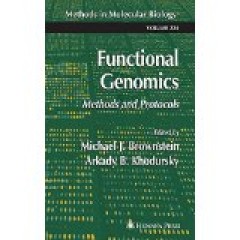
Functional genomics : methods and protocols
This collection of robust, readily reproducible methods for microarray-based studies includes expert guidance in the optimal data analysis and informatics. On the methods side are proven techniques for monitoring subcellular RNA localization en masse, for mapping chromosomes at the resolution of a single gene, and for surveying the steady-state genome-wide distribution of DNA binding proteins i…
- Edition
- -
- ISBN/ISSN
- 9781617374746
- Collation
- xi, 258 p. : ill. : ind. ; 23 cm.
- Series Title
- -
- Call Number
- 572.82 Fun

Bioinformatics and functional genomics
The bestselling introduction to bioinformatics and functional genomics-now in an updated edition Widely received in its previous edition, Bioinformatics and Functional Genomics offers the most broad-based introduction to this explosive new discipline. Now in a thoroughly updated and expanded Second Edition, it continues to be the go-to source for students and professionals involved in biomedica…
- Edition
- 2nd
- ISBN/ISSN
- 9780470085851
- Collation
- xxviii, 951 p. : ill. : ind. ; 28 cm.
- Series Title
- -
- Call Number
- 572.86 Pev b

Applied computational genomics
"Applied Computational Genomics" focuses on an in-depth review of statistical development and application in the area of human genomics including candidate gene mapping, linkage analysis, population-based, genome-wide association, exon sequencing and whole genome sequencing analysis. The authors are extremely experienced in the area of statistical genomics and will give a detailed introduction …
- Edition
- -
- ISBN/ISSN
- 9789400755574
- Collation
- xii, 184 p. : ill. : ind. ; 24 cm
- Series Title
- -
- Call Number
- 572.86 App
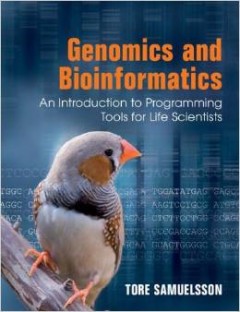
Genomics and bioinformatics : an introduction to programming tools for life s…
With the arrival of genomics and genome sequencing projects, biology has been transformed into an incredibly data-rich science. The vast amount of information generated has made computational analysis critical and has increased demand for skilled bioinformaticians. Designed for biologists without previous programming experience, this textbook provides a hands-on introduction to Unix, Perl and o…
- Edition
- -
- ISBN/ISSN
- 9781107401242
- Collation
- xvii, 338 p. : ill. : ind. ; 25 cm.
- Series Title
- -
- Call Number
- 572.86 Sam g

Analisis Pipeline Dalam Memproses Data Next Generation Sequencing (NGS) Genom…
- Edition
- -
- ISBN/ISSN
- -
- Collation
- -
- Series Title
- -
- Call Number
- -
- Edition
- -
- ISBN/ISSN
- -
- Collation
- -
- Series Title
- -
- Call Number
- -
 Computer Science, Information & General Works
Computer Science, Information & General Works  Philosophy & Psychology
Philosophy & Psychology  Religion
Religion  Social Sciences
Social Sciences  Language
Language  Pure Science
Pure Science  Applied Sciences
Applied Sciences  Art & Recreation
Art & Recreation  Literature
Literature  History & Geography
History & Geography